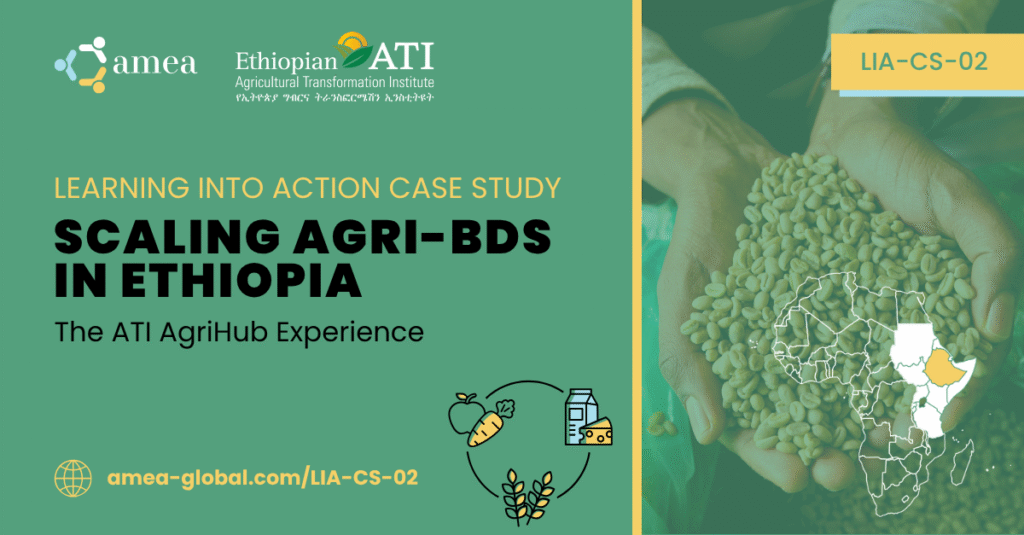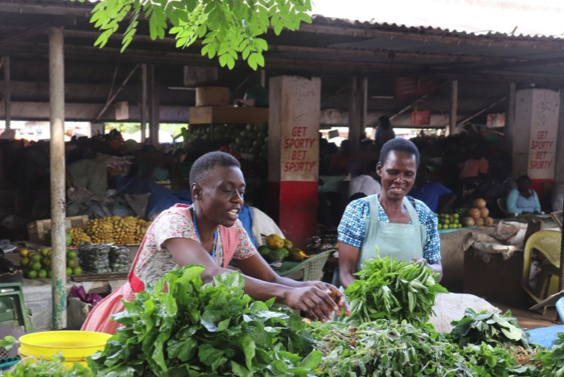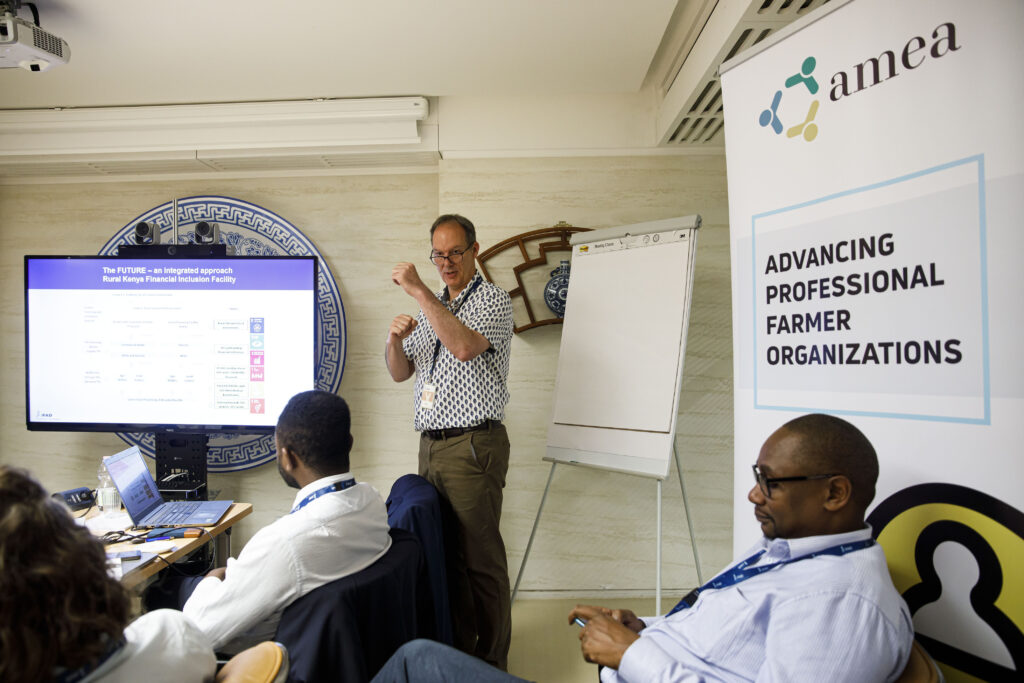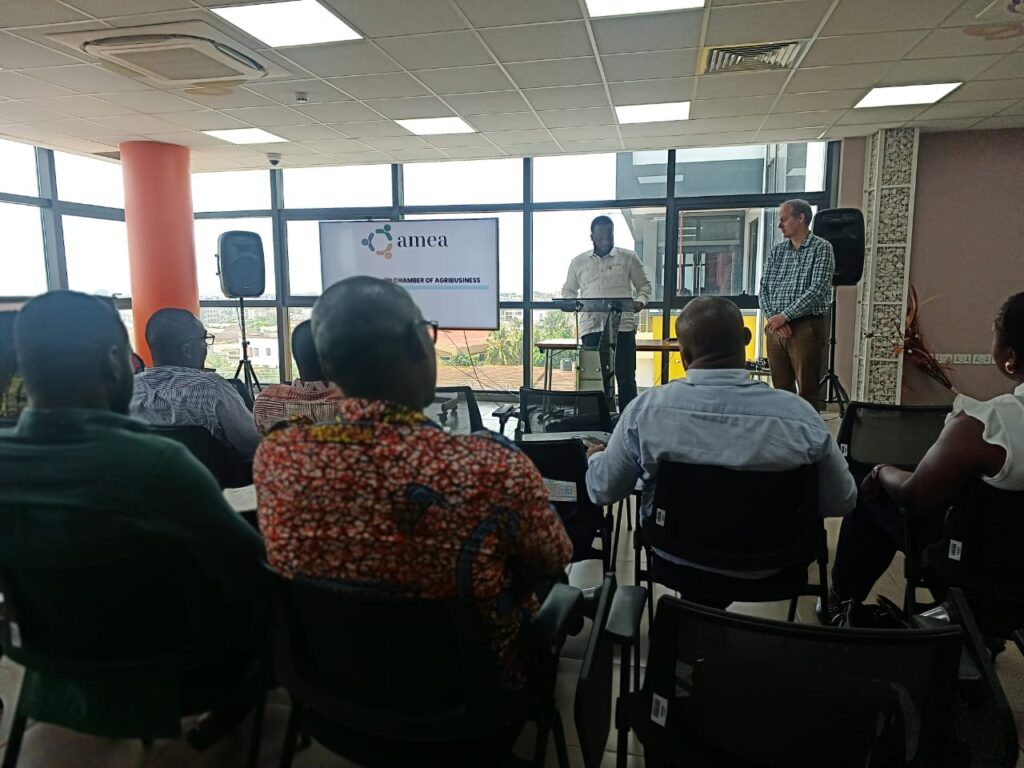The 2SCALE Ethiopia KMFCU Public-private partnership

Over three years, Ethiopia’s Agricultural Transformation Institute (ATI) achieved a breakthrough in business development services delivery—creating a tiered BDS model that generated exceptional returns while reaching over 1,200 agri-SMEs across four regions and twelve value chains. With an 18:1 ROI on revenue increases and 84:1 ROI on capital mobilized, the ATI AgriHub program demonstrates how strategic segmentation and diagnostic-led approaches can revolutionize SME support systems, delivering ETB 3.16 billion in finance access while creating sustainable employment across Ethiopia’s agricultural sector.
ATI Agrihub – Scaling Agri-BDS in Ethiopia

Over three years, Ethiopia’s Agricultural Transformation Institute (ATI) achieved a breakthrough in business development services delivery—creating a tiered BDS model that generated exceptional returns while reaching over 1,200 agri-SMEs across four regions and twelve value chains. With an 18:1 ROI on revenue increases and 84:1 ROI on capital mobilized, the ATI AgriHub program demonstrates how strategic segmentation and diagnostic-led approaches can revolutionize SME support systems, delivering ETB 3.16 billion in finance access while creating sustainable employment across Ethiopia’s agricultural sector.
Scaling Agri-BDS in the Ethiopian Barley Value Chain (Case Study)

A new AMEA-supported case study reveals how innovative approaches can unlock over $4 million in agricultural credit while achieving 95% repayment rates.
Agriculture in West Africa faces a persistent challenge: smallholder farmers struggle to access the financial services they need to grow their businesses and improve their livelihoods. In Benin, this reality has kept countless producers trapped in cycles of low productivity and limited market access.
Veggies 4 Planet and People In Kenya and Ethopia – Case Study

This case study analyzes the roles played by aggregators within ABCs and how 2SCALE supported small producers and micro-entrepreneurs in the Benin pineapple value chain to have a balance of power with value chain actors.
Lersha joins AMEA

Lersha joins us a as a local member in Ethiopia. Lern more about their work in this article.
Annual Learning Event 2024

On 25 and 26 June 2024, AMEA held its fourth Annual Learning Event (ALE). Our aim was to: Inspire you by inviting four key-note speakers to share their BDS Visions! Provide learning from across the Network Generate debate Provide ideas for partnership Launch our Global Learning into Action Initiative read the summary here BDS […]
A new phase of learning and action

Register for the 2024 Annual Learning Event and read the latet updates on Local Networks and BDS roadmaps
Corus International’s Food Safety Tool

With funding from the International Fund for Agricultural Development (IFAD) through the AMEA network, Corus International created an innovative Food Safety-First (FS-First) Budget Tool to help farmer organizations’ ability to cost out and plan steps to enhance their professionalism and meet food safety standards for their buyers and consumers. The tool provides a step-by-step guide […]
Cooperative-driven development in Ethiopia (technical note)

Nuru has developed an adaptive and locally-led cooperative development approach that has a lifetime of five to seven years, after which, as the cooperatives become increasingly self-reliant, Nuru exits the communities. Nuru’s model and approach is examined in this case study by reviewing BDS activities implemented from 2016 to 2022. As of 2022, Nuru supported […]
Cooperative-driven development in Ethiopia (case study)

Nuru has developed an adaptive and locally-led cooperative development approach that has a lifetime of five to seven years, after which, as the cooperatives become increasingly self-reliant, Nuru exits the communities. Nuru’s model and approach is examined in this case study by reviewing BDS activities implemented from 2016 to 2022. As of 2022, Nuru supported […]
